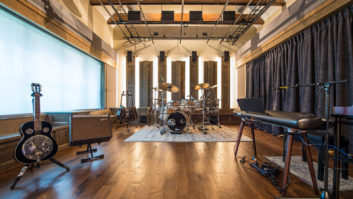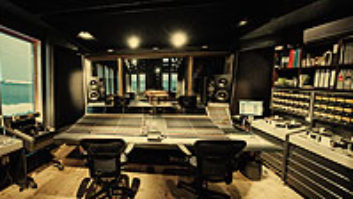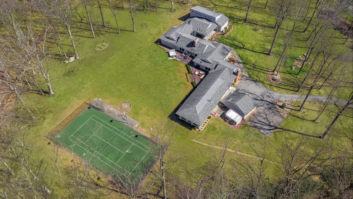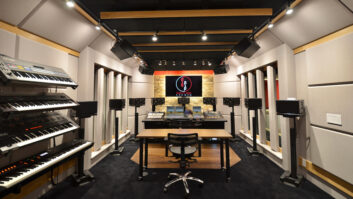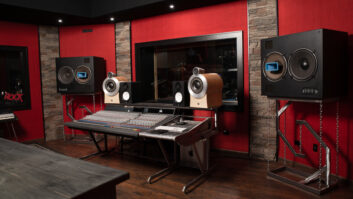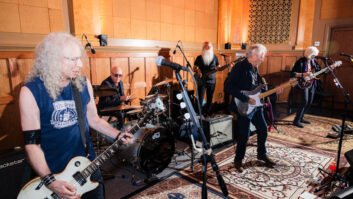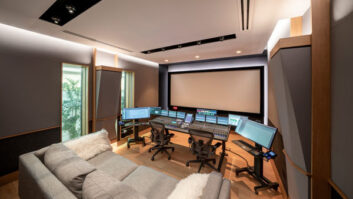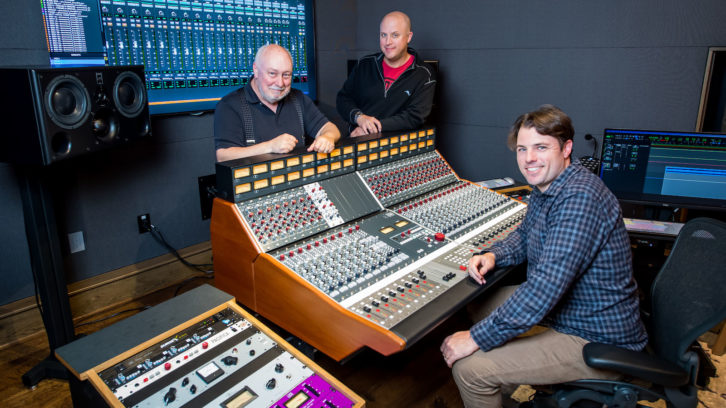
When we spoke with Russ Berger for this month’s cover story, he was quick to point out that the Russ Berger Design Group has grown since Matt Boggs’ Rambling Rose studio, pictured on this month’s cover, came online in late 2021.
“Matt’s project was finished before Mark Hornsby joined us,” Berger says. “Most people know Mark’s work as a producer and engineer. He also ran the studios at Sweetwater for many years. He has so many great ideas—he’s already making us rethink some of our methods. You know, there are time-honored ways to do things, but it’s always important to reassess.”
At this stage, some people might be scaling back…
We’re scaling up! We also have a new architect who joined us recently, Michael Kapinus, who is also a talented musician and acoustician. We have been overwhelmed with work, but bringing these people in means I can push off stuff that’s not in my wheelhouse and do more of what I love: working with our clients on imagining their spaces. If there’s one skill I have, it’s innovating acoustical ideas and creatively coming up with spaces that fit what the client is doing.
Years ago, you said something that really stuck with me, that you try never to take on a client if you don’t think their business idea is viable.
It comes down to treating people the way you’d want to be treated. Our clients aren’t just building a physical space, they’re starting a business, and often it’s part of their home. They’re probably risking everything to make their dream happen, so when they entrust you with their project, there’s a lot of responsibility there.
We know how to make great-sounding rooms, but there’s more. That’s why when we’re talking to someone like Matt Boggs, we always want to know about the family and the neighborhood, and what the person’s long-term goals are for the house. Is this someone’s forever home? Are they nearing retirement or in a growth part of their career? How will what we’re doing affect resale value? You have to understand all of this to know you’re making the right recommendations.
Cover Story: Studio Class of 2022, Part 1
Recently, I had a client come back to me after 12 years. The last time I worked with him, he wanted to build a large studio in a commercial building, and I had to say it was not a good idea: “Please don’t do this. You don’t have the money. If you get financing for this, you’re going to put good money after bad into a leasehold improvement. You could kill your business.” He took that to heart, did something much more moderate, and now we’re building him a multimillion-dollar studio. He said, “I wouldn’t talk to anybody else because you were honest with me in the beginning instead of just trying to take my money.”
Are there any developments in acoustical products that you’re excited about?
We’re pretty agnostic when it comes to products; we’re always just trying to find the right thing for the right application. What we have done is build our own diffusors, SpaceArrays and SpaceCouplers, under the brand pArtScience, which give us a really wonderful way of solving certain acoustical problems. They’re made of solid wood from sustainable sources, with inner internal damping behind them.
The diffusion pattern is carefully crafted; they provide the diffusion that we require off the panel in a hemispherical pattern, but visually the diffusor looks like a texture more than an ugly, repeating diffusing pattern. Aesthetics are important. I don’t remember who first said it, but a good-looking room always sounds a little better.
Can you explain a little more about RBDG’s commitment to sustainability?
All of our pArtScience products are manufactured in the U.S. from sustainable materials. I don’t go around waving that flag, but regardless of whether the client is going for any kind of green-building certification, it’s just the right thing to do.
As far as I know, for many years we were the only ones that had done any LEED-certified broadcast facilities; we had five or six within the first few years that they came out with the certification process.” Also, we worked with Chuck [Surack] at Sweetwater when he built his [LEED Platinum-certified] headquarters, including the Sweetwater Studios and the 250-seat performance venue. He led the charge in his state of Indiana toward sustainable architecture, and we are proud to be part of that.
